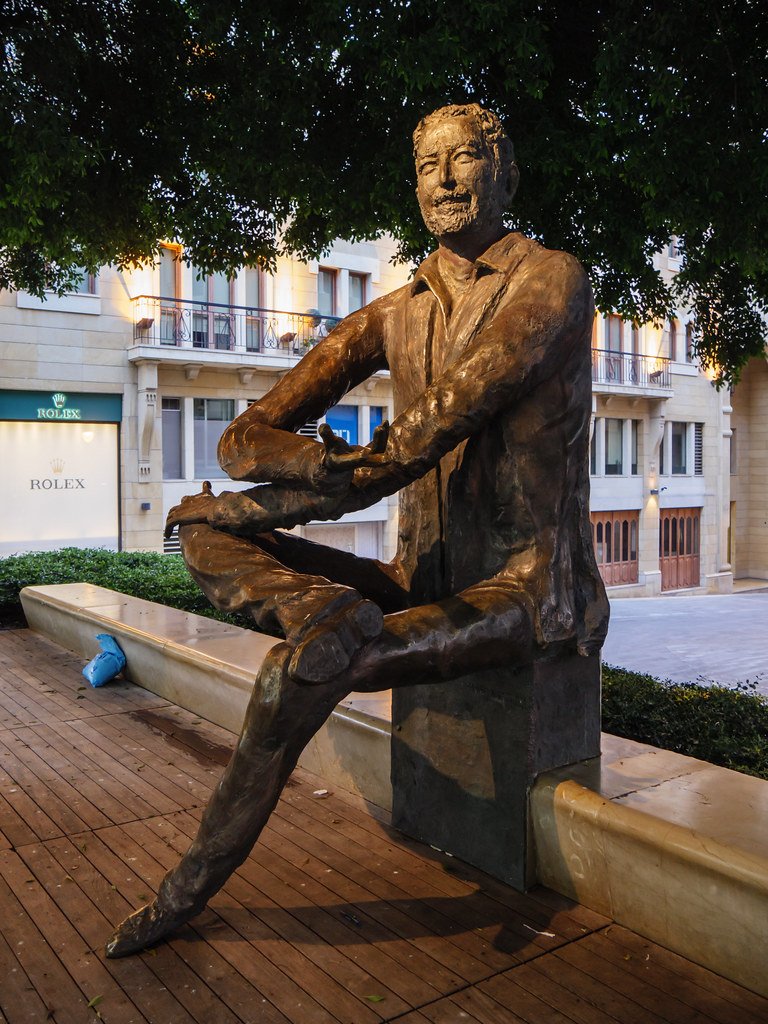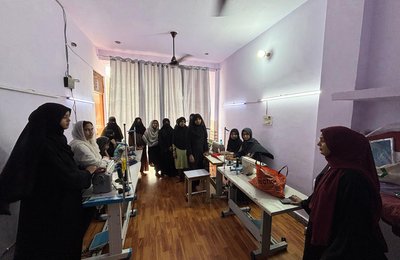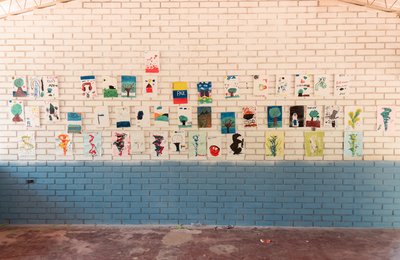Lebanon is an example on how geography shapes history. For long my country had a rocky relationship with neighboring Syria because of the Syrian military and political dominance over thirty years - an occupation in disguise, two countries that Hafez Assad once described manipulatively as “one single people, one single nation … divided into two independent states…”.
On the other hand, many Lebanese sought liberation from the Syrian grip. Samir Kassir, a prominent journalist and historian, was assassinated by the Syrian regime in 2005 for believing that democracy and reforms in Beirut and Damascus are interrelated.

Statue of Samir Kassir in Beirut (credit: my_cottage, Flickr)
As a result of the bloody crackdown on the Syrian revolution since 2011, hundreds of thousands of Syrians sought refuge in Lebanon. At the time, the Lebanese population was deeply divided between loyalists and opponents to the notorious Assad regime, headed then by Bashar Assad, Hafez’s son. Syrian refugees faced legal complications and some social hostilities, much harsher than those who fled to Turkey and Jordan encountered there. The local peacebuilding community in Lebanon stepped in to defend refugees from discrimination and attacks, support women and girls’ rights including through prevention of early marriages, and provide education as well as health care services. Meanwhile, some refugees turned into peacebuilders, empowering fellow Syrians legally as well financially and training them on non-violent communication to dismantle tensions with host communities.
Post Assad insecurities
Unfortunately, the recent political changes back home didn't make things easier for Syrian refugees in Lebanon. They remain in a grey zone, feeling unwelcome more than ever, increasingly exposed and insecure with UNCHR reducing its operation in Lebanon and cutting aid.
Days after the notorious Assad regime collapsed in December 2024, former Lebanese Prime Minister Najib Mikati called on Syrian refugees to leave Lebanon. Despite many areas in Syria still being in rubbles and the lack of fundamental services, far right politicians and activists pressured the authorities to plan a massive deportation of refugees.
Moreover, the bloodshed between supporters of the new Syrian government and Alawites impacted Lebanon in many ways. Northern Lebanon and its main city, Tripoli, have a history of sectarian clashes between local Sunnis and Alawites. When more than thirty thousand Syrian Alawites fled there, a new wave of violence erupted but was quickly contained by the Lebanese army. Sadly, in Southern Lebanon, predominately Shiite, there were several cases of angry youth mobs torching camps of Syrian refugees while screaming words of confessional hatred.
In May this year, when the new Syrian government loyalists clashed with fellow Druze citizens, these unfortunate events had an impact in Lebanon. A Sunni family was attacked in a Druze village. At another incident, angry Druze youth beat a Sunni cleric and some Syrian workers. With the arrest of the perpetrators, local religious leaders and peacebuilders invited all parties to prioritise reconciliation and calm.
Worse yet, the two countries were on the verge of military confrontation involving cross border rocket, artillery shelling and missile strikes in February and March.

People manifesting at the martyrs' square in Beirut on 14 February 2025, the 20th anniversary of the assassination of former Lebanese Prime Minister Rafic Hariri by the Assad regime (credit: Sawssan Abou-Zahr)
Challenges to Lebanese and Syrian peacebuilders
Syrian peacebuilding organizations established in Lebanon are now on the ground in Syria, wherever possible, sharing their acquired expertise and providing relief, meanwhile still serving their community in Lebanon.
A Syrian peacebuilder who worked for years to provide quality education for young Syrian refugees in Lebanon said that rebuilding the devastated schools and modernizing the curricula are key pre-requisites to encourage voluntary return from Lebanon, where many Syrian children refugees are still enrolled in public schools.

The harshness of being a Syrian refugee in Lebanon. Syrian camp in the Bekaa valley, 2015. (credit: Sawssan Abou-Zahr)
Other Syrian activists volunteered to offer legal assistance to Syrian detainees in Lebanese prisons and their families, especially those arrested for their activism against the Assad regime. They argue that there is no legal ground to keep these prisoners behind bars and that they should be freed, like those who were released from the notorious Assad imprisonment facilities. These Syrian activists are working closely with Lebanese colleagues to shed light on the fate of Lebanese in Syrian prisons, whether they be still alive or buried in some secret mass grave. When the Syrian army invaded Lebanon in 1976, the Assad regime unlawfully detained hundreds of Lebanese. Young men were arbitrarily disappeared, as well as political opponents of Assad’s dominance on Lebanon. Only a few returned home after the fall of the Syrian regime.
Syrian human rights defenders coming back from exile in Europe are demanding accountability and justice. Some have lived enough in Lebanon to diagnose what went wrong in my country after the end of the civil war in 1990. One of them shared anonymously:
They added:
Furthermore,
they said.
We Lebanese hope that too. The faster Syria heals internally, the more Lebanon will recover from the demons of the common dark past. Syria is currently in deep need of peacebuilding as a remedy to achieve justice, accountability, equality, reconciliation, social cohesion and ultimately inclusive democracy. However, there should also be another peacebuilding path with Lebanon, respecting its sovereignty, once and for all. Only then Samir Kassir’s prophecy about the correlation of democracy in Lebanon and Syria can be fulfilled and Hafez Assad’s spell broken.




